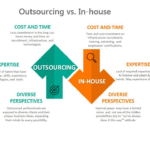(Or How Employee Survived Resume Disasters, Corporate Eye Rolls, and a Whole Lot of Miscommunication)
“But I Have a Degree… Why Won’t Anyone Hire Me as an Employee?”
If I had a dollar for every time a fresh graduate asked me that, I could probably fund a startup.
(One that actually teaches students how to not get ghosted after the third interview.)
It’s painful to watch: smart, hardworking students surviving presentations, exams, and that one group project guy who never shows up—only to end up utterly lost in the job market.
And employers? Equally frustrated.
“Why don’t candidates know how to write a decent email?”
“Do they think Excel is some kind of medieval torture device?”
So yes, there’s a disconnect. After eight years of working with both students and employers, I can confirm: this gap is real—but bridgeable.
Where Did the Disconnect Begin?
Quick flashback: in the early 2000s, employers trained freshers on the job. Entry-level meant entry-level.
Now?
Entry-level roles demand:
- 3 years of experience
- Fluency in 5 tools
- Leadership skills
- And the ability to juggle while coding
What changed?
Speed. Technology outpaced our education systems.
Universities kept teaching from 2012 syllabi while companies evolved with 2025 tools.
What Students Think Employers Want (And How Wrong They Are)
I once reviewed a resume where the headline achievement was:
“Organized a successful college fest.”
Cool. But when I asked what they did—budgeting? vendor handling?
They said, “I was the DJ.”
Important role? Sure.
Transferrable skills? Let’s work on that.
Students often assume employers want:
- A 9.9 GPA
- Fancy LinkedIn buzzwords
- Robotic memorization
What employers actually want:
- Clear communication (not group chat slang)
- Teamwork without drama
- Initiative that solves problems, not just checks boxes
What Employers Think Students Know (And How Wrong They Are)
On the flip side, I’ve heard HR professionals complain that today’s students:
- Are lazy or entitled
- Lack common sense
- Don’t understand workplace etiquette
The truth?
Most students are overwhelmed—with outdated career centers, inconsistent advice, and the fear that one typo will ruin their future.
Employers assume students are trained in:
- Email etiquette
- Using tools like Notion or Slack
- Scheduling and collaboration
But no one ever taught them those things.
Bridging the Gap: What Actually Works
1. Project-Based Learning That Mirrors Real Jobs
No more pretend marketing campaigns for soda brands.
We gave students real startup challenges like:
“How would you reduce customer churn over 6 months?”
They brainstormed, built, failed, revised—and learned.
2. Start Soft Skills Early
We hosted workshops on:
- “How to Write an Email Like a Grown-Up”
- “Feedback Without Tears”
Students laughed. Then they thanked us. These are skills nobody else is teaching—but everyone expects them to have.
3. Bootcamps for Employers Too
Yes, HR managers need a reality check too.
We brought them in to speak to students directly. No PowerPoints. No corporate scripts.
One of them realized:
“Wow, I’ve been writing job descriptions like I’m hiring for a Marvel movie.”
Suddenly: clarity. Empathy. Progress.
The Payoff: What Happens When Alignment Works
We saw tangible results:
- 42% faster placement rates
- Better employer feedback (“These kids get it!”)
- More confident students who told their story, not just recited a bio
More importantly:
They stopped begging for jobs and started solving problems.
The Downsides (Because Let’s Be Honest)
- Some institutions still think “career training” means distributing pamphlets
- Changing student and employer mindsets takes time—a lot of it
But it’s possible. One honest conversation at a time.
The Scope Is Bigger Than Jobs as an Employee…
This is about more than just placement reports.
It’s about preparing people who:
- Can walk into a room (or Zoom) with confidence
- Ask smart questions
- Problem-solve without panic-Googling every step
It’s about employers seeing potential, not just polish.
And making sure no one spends four years in college only to walk into the workforce with a flip phone and a dream.
Final Thoughts
We don’t need perfect candidates.
We need:
- Curious, teachable, real students
- Empathetic, intentional employers
Let’s stop tossing around buzzwords like “synergy” and start talking like humans.
Because students and employers aren’t on opposite teams.
They’re just on different sides of the same table.
Let’s start acting like it.
Want to Equip Students for Real Careers ?
At InternBoot, we’re bridging this exact gap—through project-based internships, communication training, resume reviews, and real-world exposure.
Explore more post –> How I Built a Real-Time Collaboration App with WebRTC (and You Can Too)




This article perfectly captures the real-world gap between what students think employers want and what they actually expect. As someone who’s explored project-based internships through InternBoot, I can say it truly bridges that disconnect—with hands-on tasks, soft skill training, and exposure to actual industry standards. Highly recommend it for anyone serious about turning academic effort into employable impact!
Absolutely loved this breakdown of the student-employer disconnect—it’s brutally honest and refreshingly solution-oriented. At InternBoot, we’re tackling these exact issues with hands-on, project-based internships and real-time mentorship. It’s not just about skills—it’s about learning to apply them in industry-relevant ways. Articles like this validate why initiatives like InternBoot matter now more than ever!https://internboot.com/